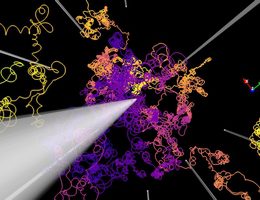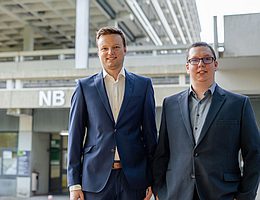Cosmic rays seem to be all around us. This is exactly what makes it difficult to find their sources. It would be helpful if you could trace their path through space. A new program will help. Press release from the Ruhr University Bochum (RUB).
Source: Ruhr University Bochum (RUB) September 13, 2022.

September 13, 2022 – An international research team has developed a computer program that can be used to simulate the transmission of cosmic rays through space. Scientists hope to be able to solve the mystery of the sources of cosmic radiation. To date, it is not known which celestial bodies emit high-energy radiation that rains on Earth from space. In order to be able to explain the empirical data, theoretical models are needed; New computer simulations can provide that. A team led by researchers from Ruhr-Universität Bochum (RUB) describes the program in the Journal of Cosmology and Astroparticle Physics, published online September 12, 2022.
Like an evenly lit sky during the day
Since their discovery 100 years ago, researchers have been trying to decipher the source of cosmic rays. Problem: Viewed from Earth, it looks like the sky to the naked eye during the day: it’s lit almost everywhere you look at it with the same brightness. Because sunlight is scattered in the Earth’s atmosphere and spread evenly over the entire sky. Cosmic radiation also spreads on its way to Earth – through interactions with cosmic magnetic fields. Only a uniformly luminous image can be seen from Earth; The origin of the radiation remains hidden.
Particle paths simulated from start to finish
“With our CRPropa software, it is possible to trace particle trajectories from their formation to their arrival on Earth – for all energies we can observe from Earth,” says Julien Dörner, a doctoral student at RUB. “We can also think more fully about the interaction of particles with matter and photon fields in the universe.”

Not only can the program simulate cosmic rays, but it can also simulate neutrinos or gamma rays that are produced in cosmic ray interactions. Dr. explains. Patrick Richerzer, postdoc at RUB. “Using the software, we can also predict such radiation from neutrinos and gamma rays from space galaxies as starbursts or active galaxies.”
The presented simulation software is the most comprehensive current simulation software and enables new research paths. Says Professor Dr. Karl-Heinz Kambert of the University of Wuppertal. “In particular, the transition from cosmic rays from our galaxy to a fragment that comes from other galaxies can be described theoretically and compared with observations.”
Experimental data can only be explained with the help of theory
The simulation program was created with an international collaboration of 17 scientists conducting research in Germany, Spain, the Netherlands, Italy, Croatia, England and Austria. RUB is leading the project with eight researchers. The work was created as part of the Collaborative Research Center (SFB) 1491 “The Interaction of Cosmic Matter”, funded by the German Research Foundation. SFB spokeswoman Professor Dr. Julia Tjus from RUB stresses: “The publication is a huge step towards a quantitative description of cosmic ray transmission and interaction in three dimensions. CRPropa will contribute greatly to understanding the source of cosmic rays. Because we need theoretical calculations that help us explain the diverse set of data we have from the universe.”
Financial support
The work was funded by La Caixa Foundation (ID 100010434), the Horizon 2020 Program of European Union (grant number 847648 and 646623), Radboud Excellence Initiative, Austrian Fund for the Promotion of Scientific Research (grant number I 4144-N27), German Research Foundation (Cooperative Research Center 1491, projects TJ 62/8-1 and KA710/5-1 as well as Clusters of Excellence 2121 Quantum Universe – 390833306), the Russian Science Foundation (grant number 22-11-00063), the Federal Ministry of Education and Research (grant number 05A20PX1 and 05A20GU2) as well as the German Academic Exchange Service and the RUB Research School.
original version
Rafael Alves Batista and Julia Baker Tjos and others.: CRPropa 3.2 – An advanced framework for the propagation of high-energy particles in extragalactic and galactic spaces, in: Journal of Cosmology and Astroparticle Physics, 2022, DOI: 10.1088/1475-7516/2022/09/035, https://iopscience.iop.org/article/10.1088/1475-7516/2022/09/035
PDF: https://iopscience.iop.org/article/10.1088/1475-7516/2022/09/035/pdf

“Social media evangelist. Baconaholic. Devoted reader. Twitter scholar. Avid coffee trailblazer.”







More Stories
Longest jets in the universe discovered – giant particle streams as long as 140 Milky Way galaxies in a row
New method reveals 307 supernova remnants
Snapchat is upping the ante on augmented reality glasses